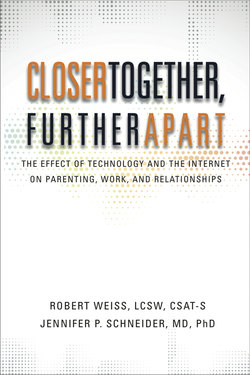Читать книгу Closer Together, Further Apart: The Effect of Technology and the Internet on Parenting, Work, and Relationships - Jennifer Schneider - Страница 16
На сайте Литреса книга снята с продажи.
“Hand” Writing
ОглавлениеIt appears, too, that the skill-set of handwriting (the one that used to cause that permanent callus on your right or left middle finger) is also rapidly diminishing. Today, children from elementary school through college have a decreased need to communicate via any kind of handwritten document, particularly in cursive. According to a 2011 New York Times article, a university professor, on a whim, asked his undergrad students to raise their hands if they wrote anything in cursive as a way to communicate. None did.4 In that article an elementary school principal says, “Schools today are preparing our kids for the 21st century. Is cursive really a 21st century skill?” For that matter, is writing anything by hand important? In response to that question, several students blogged the following thoughts:
•When kids get older, I guess they will have to use cursive to sign their names on documents, and that’s good ’cause personally that’s all I can write in cursive.
•I was done with cursive by 4th grade, so I can still read and write it, albeit slowly, but I see no practical use for this skill.
•A signature doesn’t even need to be in cursive, technically. If the purpose is to provide identification by way of your own handwriting, now I can do that with a digital fingerprint.
Today in many high schools, teachers are forced to print because the children being taught do not read cursive. As we move away from “hand” writing, schools are now requiring proficiency in computer keyboarding by the time most students finish eighth grade. By 2015, all standardized American educational tests will be administered via computer. Cursive writing—in fact, any need for a pen or pencil—appears to be less and less relevant.5
Similar changes are occurring worldwide. A recent British survey, for example, found that on average most adults engage in actual handwriting (signatures aside) approximately once every forty-one days! One in three people surveyed said they had written nothing by hand for at least six months. The last thing they wrote, according to two-thirds of those surveyed, was a hastily scribbled note, a shopping list, or a reminder meant for their eyes only.6 And in China many adults are forgetting how to draw basic Chinese characters because they type far more often than they write by hand. Many Chinese children are no longer even learning the characters. Calligraphy classes have been widely dropped in favor of science and math. Teachers themselves are less and less inclined to write, deferring instead to mouse-clicked lesson plans displayed on tablets or computers.7
And let’s face it, who can honestly recall receiving anything personal or handwritten in the mail during the past several years other than a random birthday card or thank-you note? While many digital immigrants may find this disturbing, most digital natives are unlikely to bat an eye. The natives ask: Why would I want to write by hand, let alone in cursive, when typing is so much faster and easier to read? But to an older person, for whom a handwritten thank-you note is the epitome of courtesy, it may well appear that basic handwritten notes are going into the same pile as 8-track tapes.
